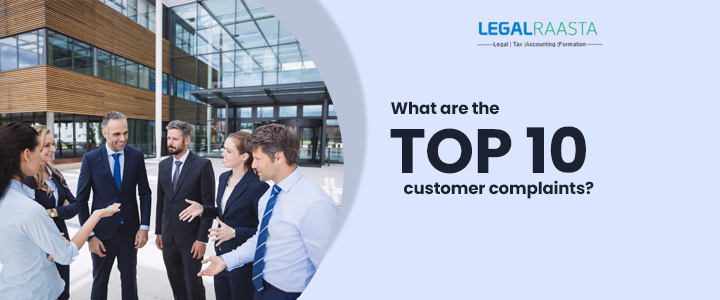What are the top 10 customer complaints?
As businesses continue to grow and expand, it's important to keep in mind the most common customer complaints. In today's digital age, consumer complaints online can spread like wildfire, leading to significant damage to a brand's reputation. It's crucial for companies to understand what issues commonly arise and to address them proactively. In this article, we'll discuss the top 10 customer complaints and what businesses can do to prevent them from happening.
Read also this -: How do I complain professionally1. Poor Customer Service
Perhaps the most common customer complaint is poor customer service. This can range from unresponsive or unhelpful customer support to rude or unprofessional behavior. Customers expect to be treated with respect and to have their concerns addressed in a timely and effective manner. To prevent this issue, businesses should prioritize training their staff on proper customer service techniques and regularly evaluate their customer support methods.
2. Product Defects
Another common complaint is product defects. Customers expect products to work as advertised, and defects can cause frustration and disappointment. To prevent this issue, businesses should prioritize product testing and quality control, and offer clear instructions for product use and maintenance.
3. Shipping and Delivery Issues
Customers often complain about shipping and delivery issues, such as delayed or lost packages, damaged products, or incorrect orders. To prevent this issue, businesses should ensure that they have a reliable shipping and delivery system in place, with clear tracking and communication for customers.
4. Billing and Payment Issues
Billing and payment issues can also cause frustration for customers. These may include incorrect charges, difficulty with payment methods, or unclear billing statements. To prevent this issue, businesses should prioritize transparency in billing and payment processes, and provide clear and concise information to customers about their charges.
5. Website and Technical Issues
In today's digital age, many businesses rely heavily on their websites and online platforms. However, customers often complain about technical issues, such as slow-loading pages or error messages. To prevent this issue, businesses should regularly evaluate their website and technical infrastructure, and ensure that they are optimized for speed and usability.
6. Misleading Advertising
Customers can also become frustrated when they feel that advertising has misled them about a product or service. This may include false claims or exaggerations about a product's features or benefits. To prevent this issue, businesses should ensure that their advertising is truthful and accurate, and that they are providing clear and concise information to customers.
7. Lack of Availability
Customers often complain about businesses being unavailable or difficult to reach. This may include long wait times on the phone, unresponsive emails, or limited customer support hours. To prevent this issue, businesses should prioritize making themselves available to customers, with responsive customer support methods and clear communication channels.
8. Poor Quality or Selection of Products
Customers may also complain about the quality or selection of products offered by a business. This may include outdated or unappealing product designs, limited options, or poor quality materials. To prevent this issue, businesses should regularly evaluate and update their product offerings, and prioritize customer feedback and preferences.
9. Difficult Returns or Refunds
Customers may also become frustrated with difficult or confusing return or refund processes. This may include unclear policies or limited options for returns or exchanges. To prevent this issue, businesses should prioritize transparent and flexible return and refund policies, with clear instructions for customers.
10. Lack of Personalization
Finally, customers may complain about a lack of personalization in their experiences with a business. This may include generic or impersonal communications or a lack of customization in product offerings or recommendations. To prevent this issue, businesses should prioritize building strong customer relationships, with personalized communications and tailored product recommendations.
Read also this -: Which is the Best Online Consumer Complaint ForumConclusion
In conclusion, businesses must prioritize their customers' needs and preferences to prevent the top 10 customer complaints. Poor customer service, product defects, shipping and delivery issues, billing and payment problems, website and technical difficulties, misleading advertising, unavailability, poor product quality or selection, difficult returns or refunds, and a lack of personalization are all common customer complaints. To prevent these issues, businesses must prioritize training their staff, product quality control, reliable shipping and delivery systems, transparent billing and payment processes, optimized websites and technical infrastructure, truthful and accurate advertising, availability, product updates, flexible return and refund policies, and building strong customer relationships.
In today's digital age, online consumer complaints can quickly spread and damage a business's reputation. It's crucial for businesses to proactively address these complaints and prioritize their customers' satisfaction. By doing so, businesses can build stronger customer relationships and foster a positive reputation, leading to increased customer loyalty and business success. Remember, the customer is king, and their satisfaction should always be the top priority.




Comments
Post a Comment